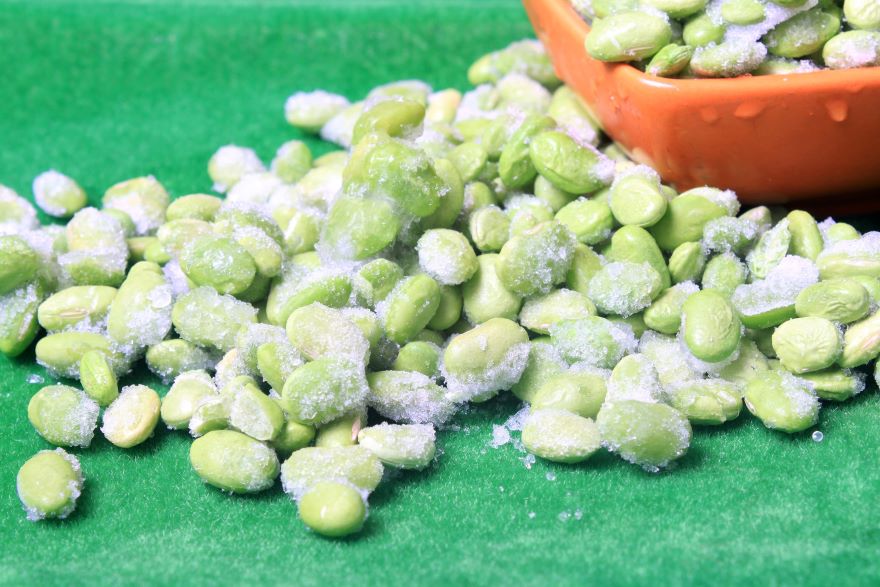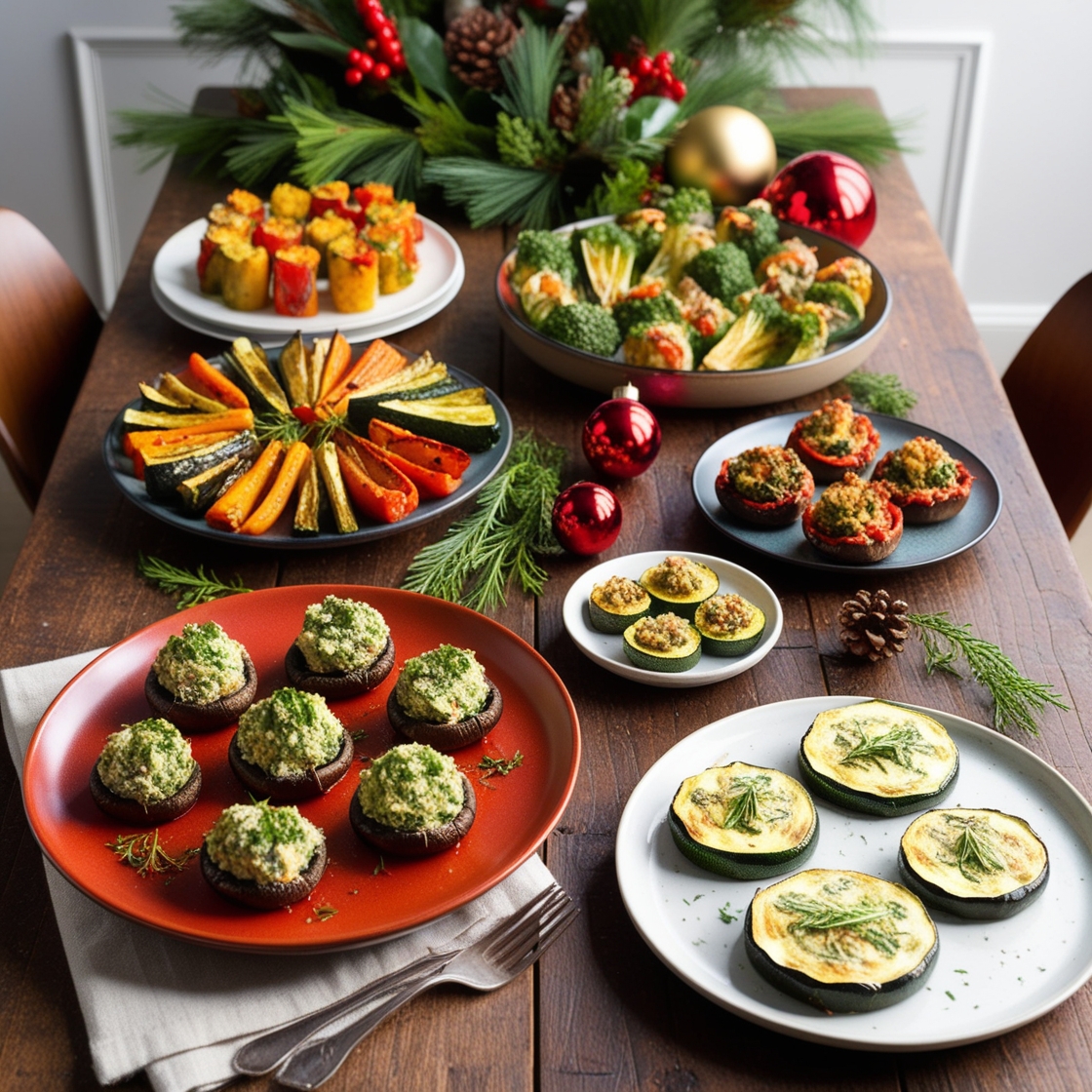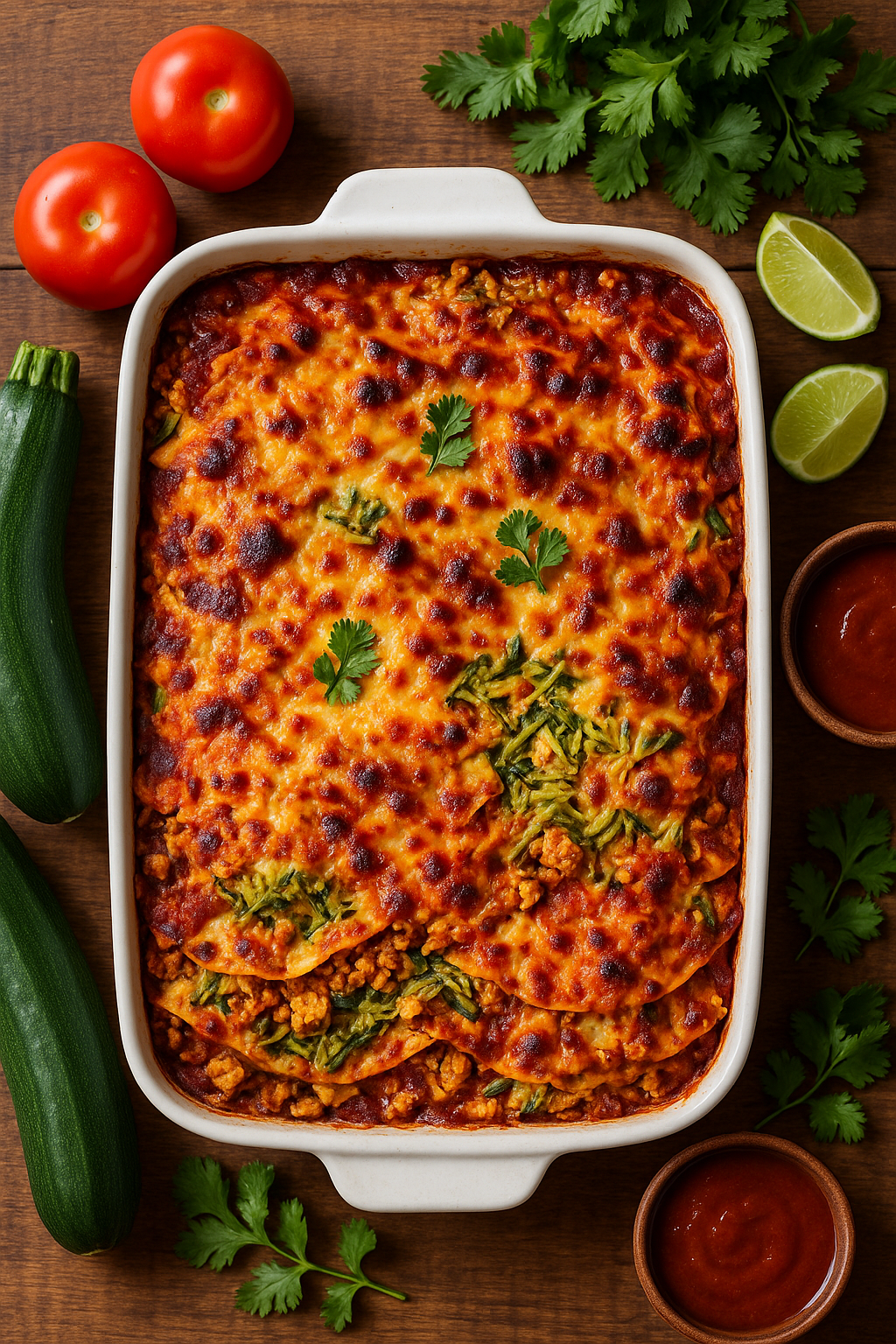I am not a fan of frozen fruits and vegetables. I enjoy eating them and their juices, but my first experiment with freezing leftover bananas was not a success. After a few days in the freezer, I excitedly took them out to make a smoothie. I took a walk for a while and when I came back they were completely soft and mushy! That’s when I realized frozen bananas need to be used differently than fresh ones – either blended while still frozen or used immediately after thawing for baking. This banana experience taught me something valuable about frozen foods—each type has its own best practices. But frozen edamame? That’s much more forgiving.
Unlike my banana experiment, these green soybeans actually thrive in the freezer, maintaining their texture and flavor perfectly. This discovery completely changed my approach to frozen foods and launched my journey toward healthier eating habits.

Why I Keep Multiple Bags of Frozen Edamame
They Never Let Me Down
Unlike my banana mishap, frozen edamame delivers every single time. I can grab a bag from my freezer at midnight or prepare them for unexpected guests without worry. The texture remains perfect – firm but tender, never mushy or tough.
Frozen edamame has saved me multiple times when I needed a quick appetizer or side dish. The fact that I can go from freezer to table in under ten minutes makes it invaluable for busy weeknights or when I want to add more protein to a meal without much effort.
The reliability factor matters enormously in my kitchen. Fresh vegetables can disappoint – wilted lettuce, soft carrots, or overripe tomatoes. Frozen edamame eliminates that gamble. Each bag contains the same quality beans, harvested at peak ripeness and preserved at their nutritional best.
Budget-Friendly and Practical
My grocery budget appreciates frozen edamame too. Fresh edamame costs nearly double the frozen price in my area. Since I buy several bags monthly, this difference adds up quickly. Plus, no waste means every dollar spent feeds my family rather than the garbage disposal.
Shopping once for frozen edamame means fewer trips to the store. I hate running out of healthy snacks and reaching for chips instead. Having edamame available prevents those poor choices that happen when hunger strikes and healthy options are unavailable.
Learning to Pick and Store Quality Edamame
What to Look for in the Store

I’ve tried several different frozen edamame brands and learned what separates good from great. The best packages feel solid when squeezed gently, without loose ice crystals rattling around inside. Those ice crystals signal temperature changes that damage texture
Reading ingredient lists became automatic after buying one brand with unnecessary additives. The best edamame contains only edamame and sometimes salt. Avoid packages with preservatives, artificial colors, or other additives. Simple ingredients mean better taste and fewer concerns about what you’re eating.
Package dates matter more than I initially realized. While frozen foods last months, fresher packages taste better. I check dates and choose packages with the furthest expiration dates when possible.
Storage Tricks I’ve Learned
My freezer temperature shocked me when I finally checked it with a thermometer. Running at 10°F instead of the recommended 0°F, it was slowly degrading my frozen foods. Adjusting the temperature improved the quality of everything frozen, especially edamame.
Once opened, I transfer remaining edamame to glass containers with tight-fitting lids. Plastic bags work too, but I squeeze out excess air first. Air exposure causes freezer burn, creating tough, flavorless spots that ruin the eating experience.
Organization prevents forgotten food buried in freezer depths. I keep all edamame packages in the same freezer section and rotate older packages to the front. This system ensures nothing gets lost and forgotten until it’s too freezer-burned to use.
Cooking Methods That Work Every Time
My Go-To Boiling Technique
Boiling remains my preferred method for cooking frozen edamame. I fill a large pot with water and add generous salt – about two tablespoons per quart of water. The salt enhances flavor while preserving the bright green color.
Once the water reaches a rolling boil, I add frozen edamame directly from the bag. The beans cook in 4-5 minutes – any longer and they become mushy. Immediately after draining, I rinse them with cold water to stop the cooking process and maintain that perfect tender-crisp texture.
When I Steam Instead
Steaming works beautifully when I want to preserve maximum nutrition. Water-soluble vitamins stay in the beans instead of dissolving into cooking water that gets poured down the drain.
My steamer basket sits over about an inch of boiling water. I arrange edamame in a single layer when possible, though slight overlapping doesn’t hurt. The steam cooks them gently and evenly in about six minutes.
Looking for a steaming setup that works like a pro? The Made In Cookware 10″ Stainless Steel Steamer Insert delivers precision and ease. Its 5-ply construction ensures even heat, while its sleek, induction-compatible design transforms any large stockpot into a high-performance steamer—perfect for keeping that brilliant green, tender-crisp edamame every time.
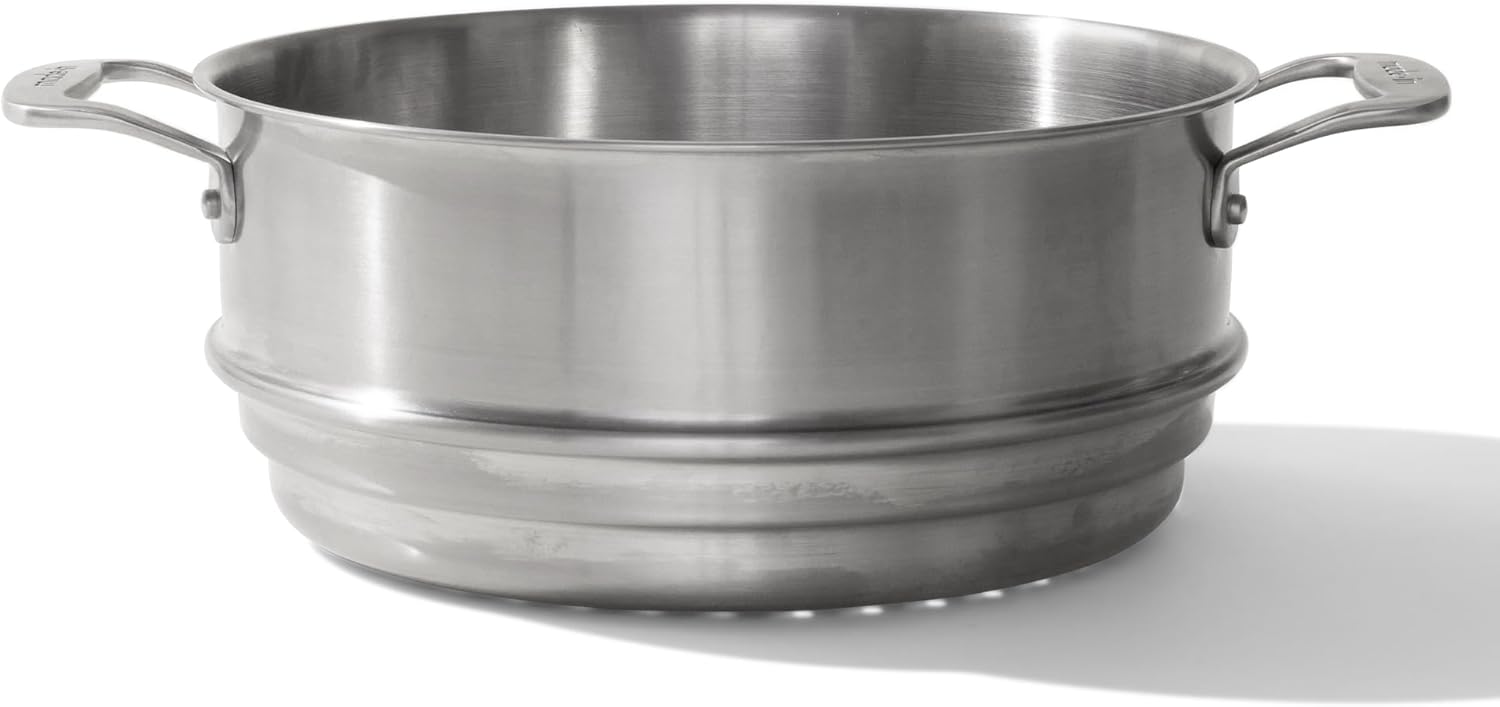
Made In Cookware – 10″ Stainless Steel Steamer Insert – Pot Strainer – 8 Quart Compatible
- Stock Pot Made in Italy
- Steamer Basket Made in China
- Premium 5-Ply Construction
- Compatible with Gas, Electric, and Induction Cooktops
Steaming requires slightly more attention than boiling. I check them at five minutes and taste-test for doneness. Properly steamed edamame should yield slightly when squeezed but still have some firmness.
Roasting for Extra Flavor
Oven-roasting transforms edamame into a crunchy, satisfying snack with a completely different texture than boiled versions. I thaw the edamame completely and pat them dry, then toss with olive oil – about one tablespoon per cup of beans – and seasonings.
Spread on a baking sheet in a single layer, they roast at 400°F for 10-12 minutes until golden and slightly crispy. I shake the pan halfway through for even browning. The result is edamame with a crunchy exterior and tender interior that works perfectly as a healthy snack or party appetizer.
Want to take roasted edamame to the next level? A high-performance oven like the Breville Smart Oven Air Fryer Pro gives you unbeatable precision. With its super convection setting, your edamame turns perfectly crispy on the outside while staying tender inside—without babysitting the oven. It’s not just for beans; this powerhouse handles everything from air-fried veggies to artisan bread.

Breville BOV900BSS Smart Oven Air Fryer Pro and Convection Oven, Brushed Stainless Steel
- The Breville Smart Oven Air Fryer Pro with Element iQ System is a versatile countertop oven allowing you to roast, air fry and dehydrate; Super convection reduces cooking time by up to 30%; Choose from 13 cooking functions; Includes interior oven light
- ELEMENT iQ SYSTEM: With 5 independent quartz elements, smart algorithms steer oven’s power where and when it’s needed to create a tailored cooking environment; Sensing and digital PID temperature control eliminate cold spots for precise cooking
- AIR FRY AND DEHYDRATE SETTINGS: Air fry family favorites like French fries; Higher temperatures combine with super convection (maximized air flow) for crispy golden, air-fried foods; Oven also dehydrates up to 4 trays at once of a wide range of foods
- SUPER CONVECTION TECHNOLOGY: Electric air fryer’s 2 speed convection fan (super & regular) offers more cooking control; Super convection provides greater volume of hot air to ensure fast and even heat distribution for air frying, dehydration and roasting
Flavoring Beyond Basic Salt
Simple Seasonings That Transform
Salt alone makes great edamame, but experimenting with different seasonings keeps things interesting. Garlic powder mixed with salt creates an aromatic blend that smells amazing while cooking.
Sesame seeds toasted in a dry pan add a nutty crunch and visual appeal. I toast extra seeds and store them in a small jar for quick edamame enhancement. The combination of salt and toasted sesame seeds tastes restaurant-quality.
Red pepper flakes bring balanced heat that doesn’t overpower the bean’s flavor. I start light and build from there. While spice isn’t usually my preference, I’m adapting—and I let everyone at the table add more if they want a bolder kick.
International Flavors I’ve Discovered
Coconut aminos mixed with rice vinegar and a drop of sesame oil creates an Asian-inspired coating that transforms plain edamame into something special. I brush this mixture on warm beans and watch it absorb quickly.
Mediterranean flavors work surprisingly well too. Lemon zest, dried oregano, and good olive oil create a bright, herb-forward taste that pairs beautifully with grain bowls or roasted vegetables. The acidity from lemon juice brightens the earthy bean flavor. Mexican spices opened another flavor dimension. Chili powder, lime juice, and a tiny bit of cumin turn edamame into a south-of-the-border treat. This version pairs perfectly with tacos or as a pre-dinner snack with margaritas.
Two Recipes That Changed How I Use Edamame
Healthy Chao Fan
This chao fan quickly became a family favorite once I started making it with more nutritious ingredients. The protein-rich edamame and antioxidant-packed black rice create a meal that’s not only satisfying but also nourishing — so much so that everyone keeps asking for it. And whenever we have leftover rice, this recipe is our go-to way to turn it into something delicious.
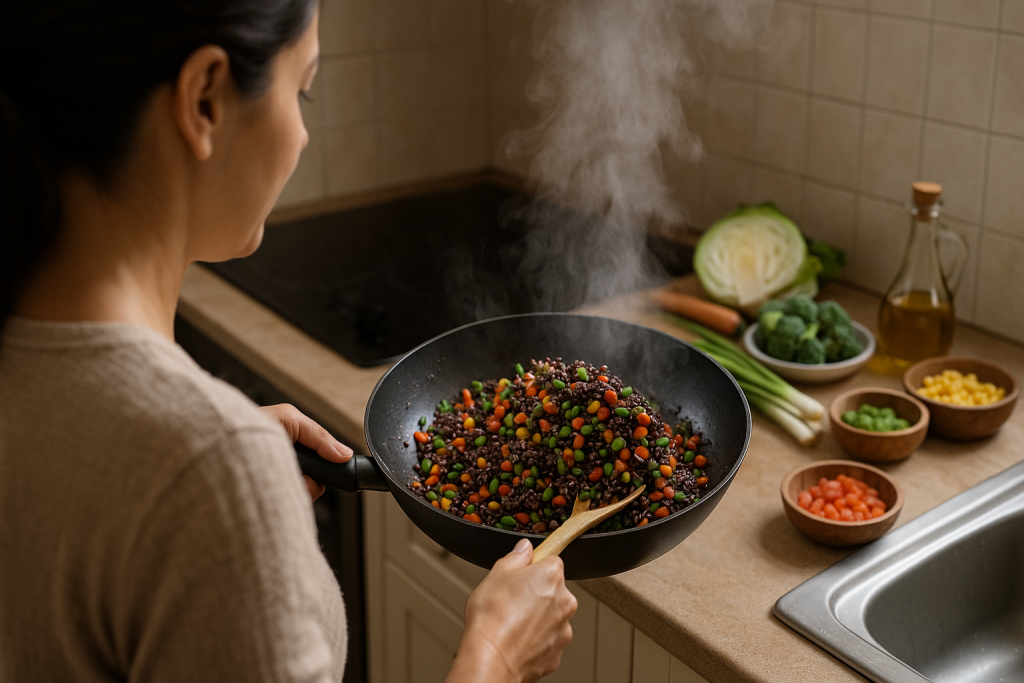
What you need:
- 2 cups cooked black rice, cooled
- 1 cup frozen edamame, shelled
- 1 red bell pepper, diced
- 1 large carrot, diced small
- Half cup corn kernels (fresh or frozen)
- 2 green onions, sliced thin
- 3 garlic cloves, minced
- 2 tablespoons sesame oil
- 2 tablespoons coconut oil
For the sauce:
- 3 tablespoons coconut aminos
- 1 tablespoon rice vinegar
- 1 teaspoon fresh ginger, grated
- 1 teaspoon maple syrup
- Half teaspoon red pepper flakes
- 1 tablespoon sesame seeds
How I Make It
I cook the frozen edamame using my boiling method, then set them aside to cool. The black rice needs to be completely cool too – day-old rice works perfectly for this recipe.
I heat coconut oil in my largest skillet or wok over medium-high heat. The vegetables go in first – carrots and bell peppers need a few minutes to soften. Then I add corn and garlic, stirring constantly so the garlic doesn’t burn.
Next comes the cooled black rice, breaking up any clumps with my spatula. I stir everything together, letting the rice get slightly crispy on the bottom. The edamame goes in last along with the sauce mixture and green onions.
Everything gets tossed together until the sauce coats all the ingredients evenly. I sprinkle sesame seeds on top and serve immediately. This makes enough for four people as a main dish or six as a side.

Smooth and Satisfying Edamame Soup
This soup surprised everyone who tried it. The idea of edamame soup sounded strange initially, but the creamy texture and fresh flavor won over skeptics quickly.
What you need:
- 3 cups frozen edamame, shelled
- 4 cups vegetable broth (low sodium)
- 1 medium onion, diced
- 3 garlic cloves, minced
- 2 tablespoons olive oil
- Half cup fresh basil leaves
- Quarter cup fresh mint leaves
- 2 tablespoons fresh lemon juice
- Salt and black pepper to taste
How I Make It

I heat olive oil in my biggest pot and toss in the diced onion. After about five minutes, it gets soft and smells great. Then I add garlic for just one minute – any longer and it burns, which happened to me once and ruined the whole batch.
Next goes the frozen edamame with all the broth. I let it boil, then turn it down to simmer for fifteen minutes. My blender only holds two cups, so I blend everything in small batches with the fresh herbs. The herbs make it turn this amazing bright green.
I dump everything back in the pot and add lemon juice, salt, and pepper. Done! This makes enough for four people, and leftovers taste even better the next day.
Blending edamame soup into that velvety, restaurant-quality texture is easy with a Vitamix 5200 Professional Blender. Unlike standard blenders, this one creates a silky smooth finish in seconds—even with fibrous ingredients. It’s an investment, but one that pays off every time you make soups, smoothies, or sauces that need that flawless, creamy consistency.

Vitamix 5200 Professional Grade Blender for Smoothies, Food Grinder and Emulsifier, 64oz Pitcher, Black
- Variable Speed Control: Easily adjust speed to achieve a variety of textures. The dial can be rotated at any point during the blend, so you’re in complete control
- Large Batches: The size and shape of the self-cleaning 64-ounce container is ideal for blending medium to large batches
- Hot Soup: The blades in the Vitamix container reach speeds fast enough to create friction heat, bringing cold ingredients to steaming hot in about six minutes
- Hardened Stainless-Steel Blades: Our aircraft-grade stainless steel blades are designed to handle the toughest ingredients, so from the first blend to the last, you get the same quality results
Understanding What Makes Edamame Special
Protein That Builds and Sustains
The protein quality in edamame is genuinely impressive. Unlike many plant proteins that lack certain amino acids, edamame provides everything our bodies need to build and repair muscle tissue..
This complete protein characteristic makes edamame exceptional among plant foods. For anyone following plant-based or vegetarian diets, this matters enormously. One cup provides about one-third of daily protein needs for most adults.
The protein also contributes to feeling full and satisfied after eating. I notice the difference when I include edamame in meals versus skipping it. The sustained energy lasts much longer than meals built around simple carbohydrates alone.
Fiber That Supports Digestion
The eight grams of fiber per cup support healthy digestion in ways I’ve definitely noticed. Regular edamame consumption has improved my digestive health significantly compared to periods when I eat less fiber overall.
This fiber content also helps regulate blood sugar levels. Unlike simple carbohydrates that cause energy spikes and crashes, the fiber in edamame slows digestion and provides steady energy release.
Weight management benefits from this fiber content too. Feeling full and satisfied after eating prevents overeating and reduces cravings for less healthy snacks later. Edamame satisfies hunger in ways that processed snacks simply cannot match.
Vitamins and Minerals That Matter
Vitamin K content in edamame supports bone health and proper blood clotting. My doctor mentioned this benefit when discussing foods that support aging gracefully. Strong bones become increasingly important as we get older.
Iron content helps combat fatigue and supports healthy blood. While not as high as red meat, the iron in edamame absorbs better when eaten with vitamin C-rich foods like the lemon juice in my soup recipe.
Calcium, magnesium, and potassium round out the mineral profile. These minerals support heart health, muscle function, and bone strength. Getting them from whole foods like edamame provides better absorption than taking isolated supplements.
How Edamame Changed My Approach to Healthy Eating
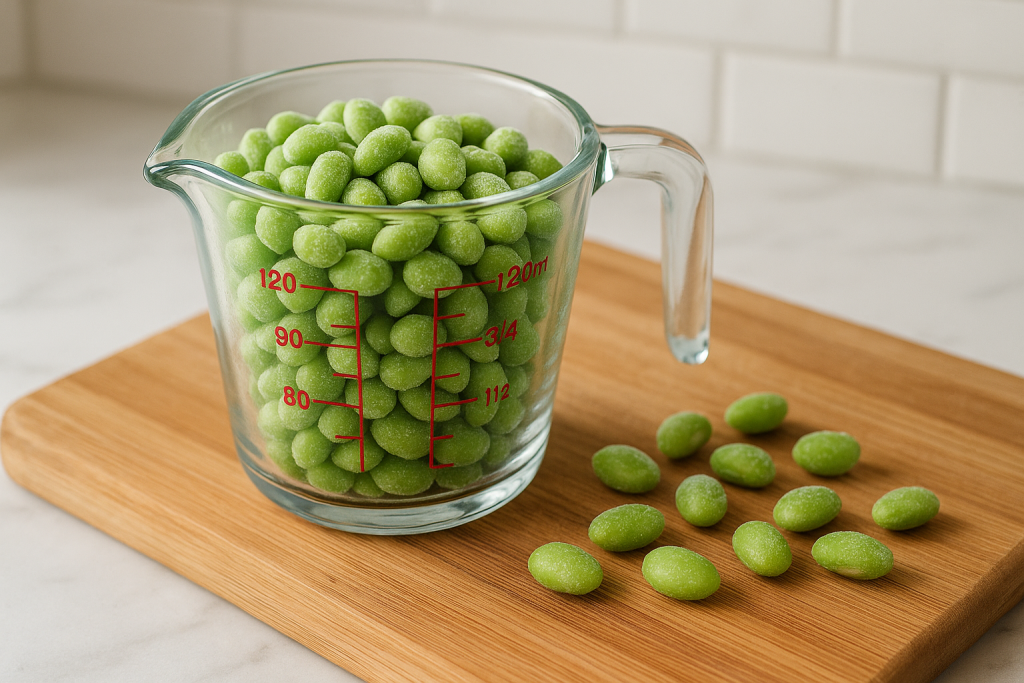
My relationship with healthy eating transformed when I discovered that wellness isn’t about perfection—it’s about making nourishing choices consistently accessible. Before embracing foods like frozen edamame, I trapped myself in an all-or-nothing mindset where eating well required constant planning and elaborate preparation.
True wellness wisdom lies in removing barriers rather than creating them. Frozen edamame eliminates the obstacles that derail good intentions: no spoilage guilt, no time excuses, no limited versatility. It taught me that sustainable health happens when nutritious choices become the easy choices.
The deeper lesson extends beyond any single food. Real transformation comes from embracing tools that align with your actual life, not your idealized version of it. Not all convenient options serve us equally—the wisdom lies in discerning which foods truly support our goals.
Today, opening a bag of frozen edamame feels like opening possibilities for nourishment without compromise. Whether fueling a busy afternoon or creating a satisfying soup, these humble beans remind me that healthy living thrives on practical choices, not perfect ones. The path to wellness isn’t paved with sacrifice—it’s built with ingredients that make good nutrition effortless and sustainable.
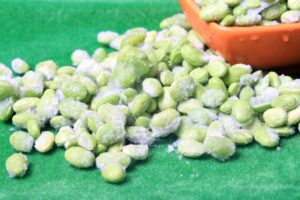
*We may earn a commission for purchases made using our links. Please see our disclosure to learn more.

